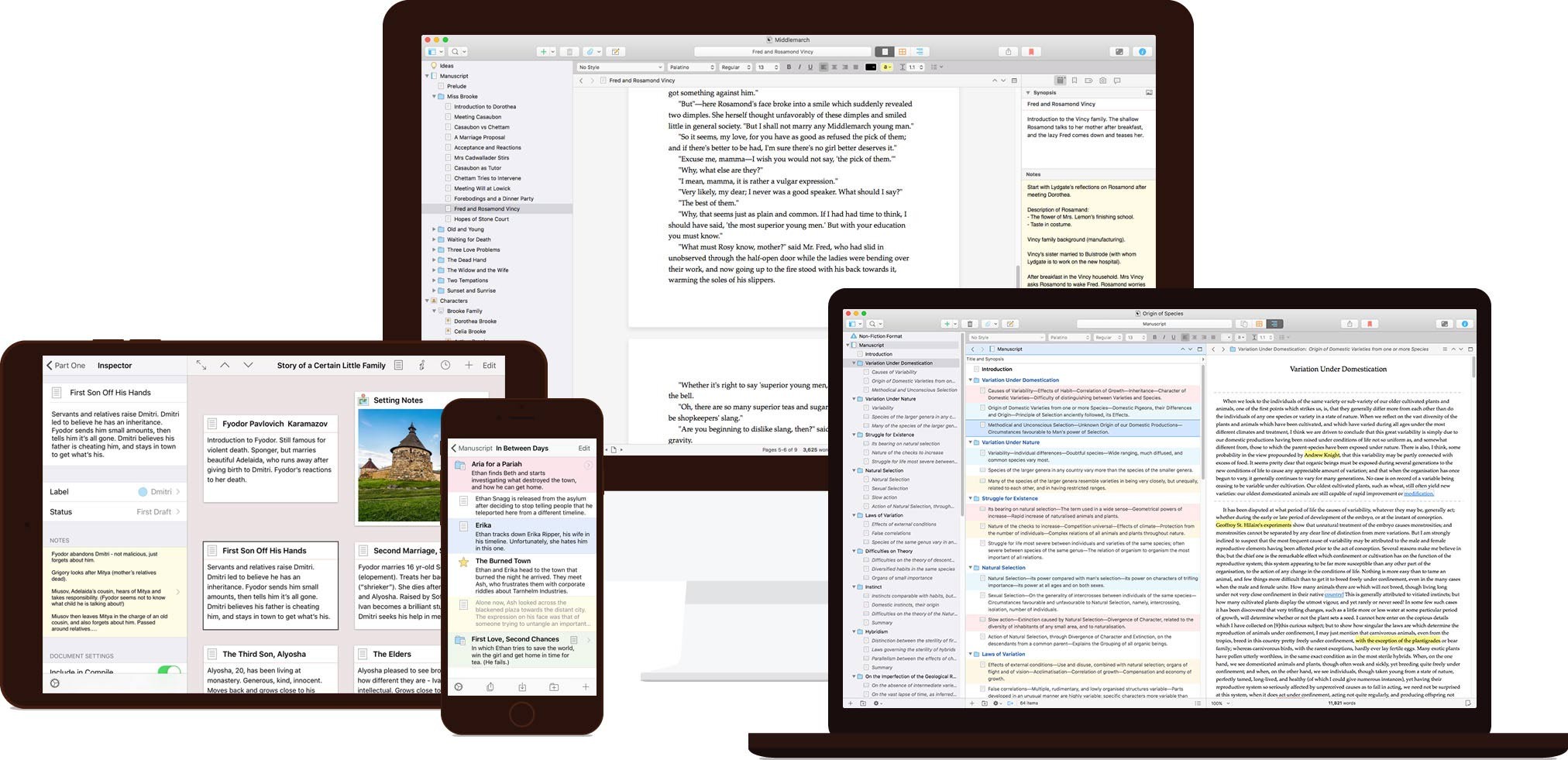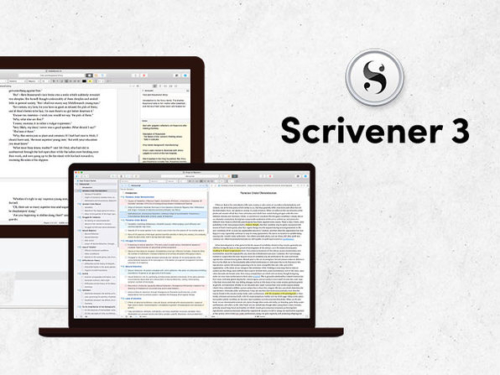

- #Scrivener for mac computer how to
- #Scrivener for mac computer full
- #Scrivener for mac computer software
But since it is, it’s great not to have to reconfigure everything each time.
#Scrivener for mac computer software
Of course, if this book writing software wasn’t so complex to set up you wouldn’t need to save a template.

All the customization you’ve decided on for the first eleven books is ready and waiting for you. So if you’ve got a specific way you like your Binder set up for a long-standing fantasy series, you can select the template when you start writing book twelve. Scrivener lets you save all your options as a sort of “preset” that you can easily select for each new project you write. Save your settings with Templatesīecause Scrivener has so many customization options, you may feel overwhelmed by configuring all those settings, only to do it again the next time you start a new project. If you have character templates or character development documents bookmarked, you can reference them immediately and note the change there, without skipping a beat in your writing session. Let’s say you’re writing a novel, and somewhere along the way, you decide to change a character. But what makes it especially useful is that clicking on a bookmarked document will open it side-by-side with your current document, allowing you to reference or edit it without having to switch back and forth between texts. It's exactly what it sounds like: you can seamlessly access any project documents that you refer to frequently. To that end, Scrivener utilizes a Bookmarks system.
#Scrivener for mac computer how to
Software that claims to help you do something - like learning how to write a book - needs to walk a fine line between offering a variety of functions while also having an organized and easy-to-navigate interface. Like everything else in Scrivener, this feature is endlessly customizable, so each writer can develop a system that truly serves their workflow. Each file in your project gets a “card” that you can customize with colors and labels, and then rearrange easily. Scrivener’s Corkboard mode takes that idea and runs with it. By writing down what happens in each scene and spreading the notecards out on the floor (or pinning them to a corkboard), authors have long been able to visualize their project as a whole, moving scenes around until they have a plot that flows smoothly. Get a big-picture view with the CorkboardĪ simple stack of notecards is a classic outlining and editing tool for writers.

It even includes a Trash folder, so you don’t need to worry about accidentally deleting something.įun fact: Back in the day, a scrivener (or scribe) was someone who could read and write, and made their living writing or copying material on behalf of others. Files in the Binder can be grouped in subfolders, and labeled with different colors and icons to allow for easy categorization and organization. And since there are so many different types of files associated with a Scrivener project, there needs to be a means of keeping them organized. Still, Scrivener’s Binder does the job very well. While it is incredibly useful to have everything within easy reach, Scrivener didn’t exactly invent the idea - sidebars have been used in everything from email to file browsers to, yes, writing apps, for decades now.
#Scrivener for mac computer full
Touted as an innovative means of keeping all your notes, research, and manuscript files in one place, the Binder is really just a sidebar full of files. Access your entire project from The BinderĪt the center of a Scrivener project is the Binder. So let's take a closer look at some of Scrivener's features.


 0 kommentar(er)
0 kommentar(er)
